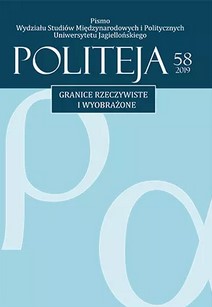GRANICE PAŃSTWA KOŚCIELNEGO W II POŁOWIE VIII WIEKU W ŚWIETLE WCZESNYCH ŹRÓDEŁ HISTORYCZNYCH
BORDERS OF THE PAPAL STATE IN THE SECOND HALF OF 8TH CENTURY IN THE LIGHT OF EARLY SOURCES
Author(s): Maciej DawczykSubject(s): Christian Theology and Religion, History of Church(es), Regional Geography, Politics and religion, 6th to 12th Centuries, History of Religion
Published by: KSIĘGARNIA AKADEMICKA Sp. z o.o.
Keywords: papal state; papacy; Franks; Lombards; middle ages;
Summary/Abstract: In 756 as the result of donation made by frankish king Pepin papacy formally controlled duchy of Rome, part of former exarchate of Ravenna (earlier directly submitted to Ravenna), larger part of duchy of the Pentapolis and probably duchy of Perugia. Papacy claimed belonged to Lombards territory of plenaria iustitiae (part of Pentapolis and duchy of Ferrara) as well. In 765 king Desiderius transfered to papacy not plenaria iustitiae but some parts of Tuscany, duchy of Benevento and duchy of Spoleto. In 774 took place frankish intervention which destroyed lombard kingdom. Frankish king Charlemagne conveyed to pope Hadrian I new territories (lombard Tuscany, Corsica, Spoleto, Benevento, Istria, Veneto) and confirmed old donations. However the pope had not possibility to really take over these lands. In 781 as the recompensation king conveyed to Hadrian southern part of Lombard Tuscany, territory of Sabina, part of Campania and confirmed territories in exarchate and Pentapolis. Corsica, Sardinia and Sicily were added as well. In 787 papacy received next part of Campania. Determination of the shape of the territories practically controlled by the pope is very difficult because in many lands there were problems with introduction of real papal reign.
Journal: Politeja - Pismo Wydziału Studiów Międzynarodowych i Politycznych Uniwersytetu Jagiellońskiego
- Issue Year: 16/2019
- Issue No: 58
- Page Range: 65-84
- Page Count: 20
- Language: Polish

